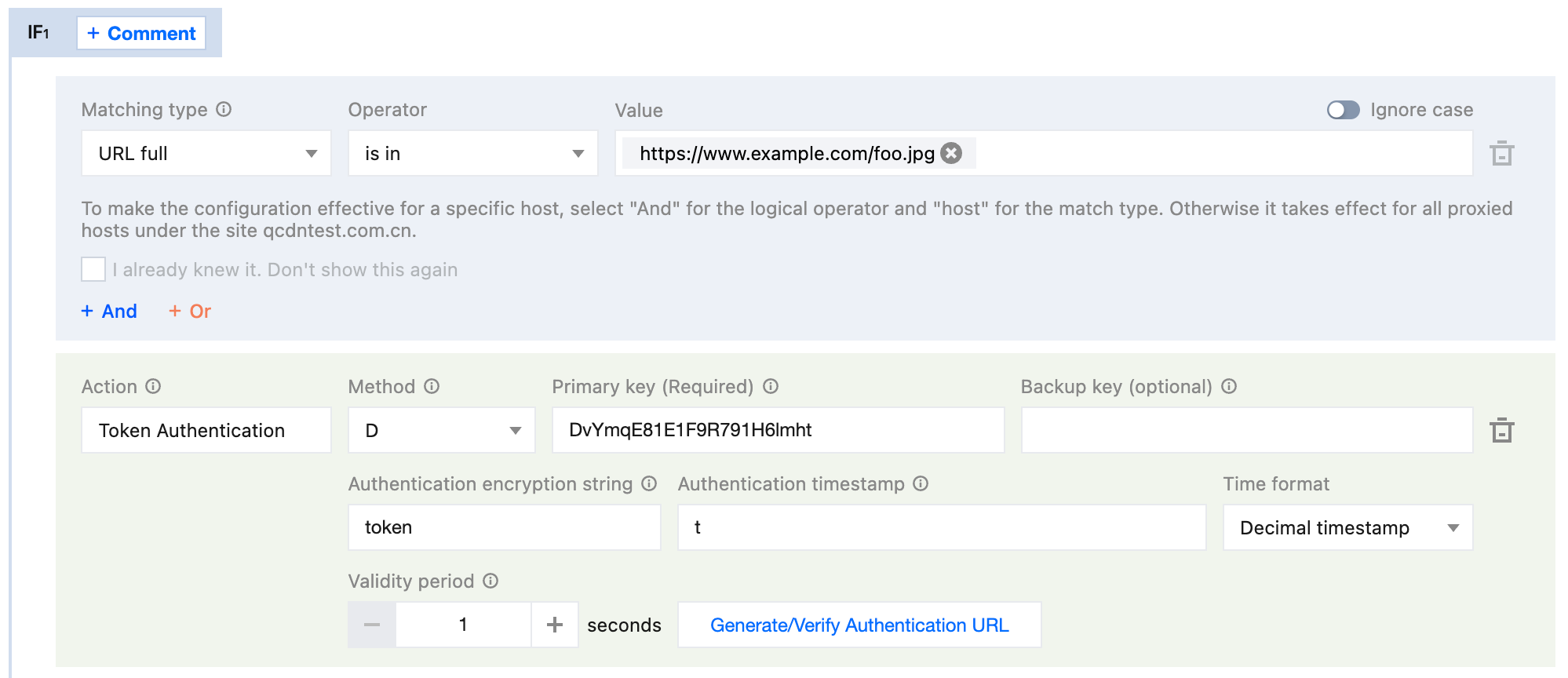Authentication Method D
Authentication URL format
http://Hostname/Filename?token=md5hash&t=timestamphttps://Hostname/Filename?token=md5hash&t=timestamp
Parameter description
Field | Description |
Hostname | Site Acceleration Domain. |
Path | Resource access path, authentication requires prefixing with /. |
token | Authentication parameters name set by Definition. |
t | Timestamp parameter name set by Definition |
timestamp | Timestamp parameter. Format: Decimal positive integer Unix timestamp, is the total number of seconds from UTC time January 1, 1970, 00:00:00 to the present, its Definition is independent of the timezone; or Hexadecimal positive integer Unix timestamp, is the total number of seconds from UTC time January 1, 1970, 00:00:00 to the present, its Definition is independent of the timezone. |
md5hash | A fixed-length string of 32 characters calculated using the MD5 algorithm: Algorithm: MD5(Key + Path + timestamp). Note: When calculating, the hexadecimal timestamp must exclude the hexadecimal number identification 0x. Authentication Logic: If the request is not expired, the node compares this string value with the md5hash value carried in the request URL. If the values are the same, authentication passes and the request is responded to; if the values are different, authentication fails, returning 403. |
Configuration Samples
Assume the request
https://www.example.com/foo.jpg uses authentication method D, configured as follows:
Get authentication parameters:
Path:
/foo.jpg.timestamp: The server generates the authentication URL time as July 15, 2024, 15:51:47 (UTC+8), converted to decimal (Unix timestamp) format is
1721029907.Key:
DvYmqE81E1F9R791H6lmht.md5hash: MD5(Key + Path + timestamp) = MD5(
DvYmqE81E1F9R791H6lmht/foo.jpg1721029907) = cadcec4a04e67b9c2abf4b61c642a0dd. Authentication URL generated by the client request
https://www.example.com/foo.jpg?token=cadcec4a04e67b9c2abf4b61c642a0dd&t=1721029907.Node Authentication
When the Node Server receives a request from the client via the encrypted URL, it extracts the timestamp parameter from the URL, adds the configured Effective duration of "1 second", and compares it to the current time:
1. exceed the "timestamp + effective duration" time, the request is not expired, continue to step 2.
2. The Node Server calculates the md5hash value using the obtained authentication parameters and compares it with the md5hash value carried in the request URL. If the values are the same, authentication passes and the request is responded to; if the values are different, authentication fails, returning 403.